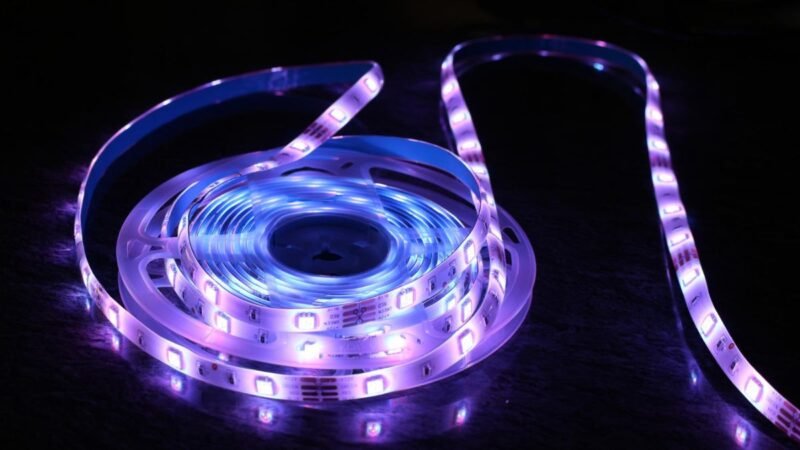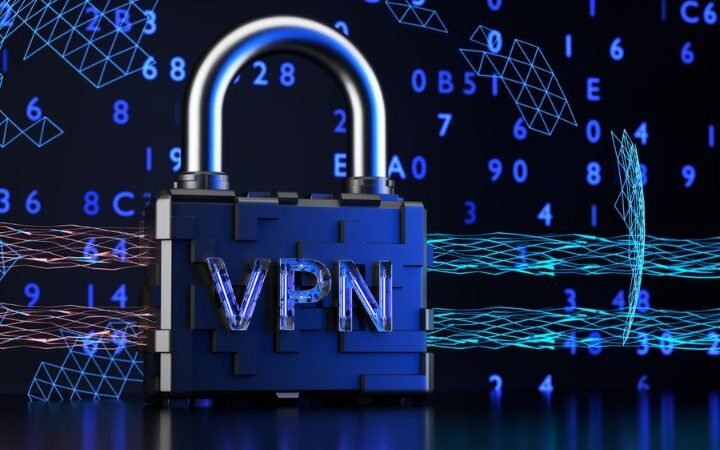LiFi: What Is It, Advantages, Limitations And Use Cases Of Technology To Have An Internet Connection With Light

We are all more than used to using the WiFi network. Surely, most users have a router at home that emits a signal to which our mobile phones, laptops, computers, tablets, televisions and consoles can be connected to open the door to that alternative world that we know as “Internet”. Anyone would say that the first wireless network was created in Hawaii in 1971 and that the ARPANET is almost 50 years old.
Much has happened since then, and throughout the last decade, we have seen interesting advances in this world of wireless networks. One of them, perhaps the most striking, is the LiFi (Light Fidelity), a technology with which light can be much more than light. In this text, we are going to know the origins of LiFi, how it works, its current state, advantages and limitations.
What Is LiFi?
Simply put, LiFi is visible light or VLC (Visible Light Communication) data transmission system. We first heard of it in July 2011 when Harald Hass, a professor at the University of Edinburgh, coined the term during a TED talk.
The principles of this technology are based on altering the frequency of visible light between 400 and 800 THz. LED bulbs are used that flicker at such a speed that it is imperceptible to the human eye, but yes to a photoreceptor that must be connected to the device. It is the equivalent of connecting a WiFi antenna to a desktop computer, and only instead of interpreting the WiFi signal, it interprets a light bulb on or off, ones and zeros.
A LiFi system uses an LED bulb that turns on and off at such a speed that it is not noticeable to the human eye.
An encoder is attached to the luminaire. The Internet signal reaches the encoder, and the light bulb turns on or off to transmit the data. The photoreceptor is placed in an area where the light reaches, interprets this data and allows the connection. It has also been tested with infrared rays, which allowed a download speed of 42.8 Gbps to be achieved, and 224 Gbps has been achieved in laboratories.
Advantages Of LiFi
The advantages of LiFi are not few, but we can summarize them in three: speed, interference and security. It is not without disadvantages either, but we will address them in the next section. Let’s start with speed.
We have already seen that the speed that LiFi systems can achieve is not low. The first test showed 10 Mbps, and it was expected that the maximum speed to be achieved with this technology would be 500 Mbps. It is obvious that it is not. After leaving the laboratories (where a speed of 224 Gbps was achieved), the LiFi achieved a speed of 1 Gbps. Now we have fibres of 600 Mbps and up to 1 Gbps, but at that time we were talking about 100 times the average speed of WiFi.
Later, Joanne Oh, from the University of Eindhoven, placed a series of antennas transmitting infrared rays in a laboratory, which allowed her to achieve 42.8 Gbps at a distance of 2.5 meters. The waves were 1,500 nanometers long, making them imperceptible to the human eye. In addition, several antennas with different wavelengths and angles could be placed to avoid possible interference.
The electromagnetic spectrum is very wide, which works in favour of LiFi technology when it comes to reducing interference.
Advantages of LiFi is that it takes a back seat to the point of being almost superfluous. LiFi technology can use the entire spectrum of visible light. WiFi uses the 2.4 GHz and 5 GHz bands, so all connections are crowded into a reduced bandwidth (that’s why you may notice connection problems when using the 2.4 GHz band on a block of buildings, for example).
LiFi systems have zero radio frequency interference with other devices, so they are solutions to consider for aeroplanes or hospitals.
By using the visible light spectrum, LiFi technology can emit in very many wavelengths, preventing different lights from overlapping each other. As long as the receiver is ready to detect a particular wavelength, there will be no problems with other lights. This can be useful to offer a network connection in offices and cities.
Finally, One of the weaknesses of the LiFi is that the light does not penetrate the walls, and this, in turn, is a great argument. With WiFi technology, someone with bad intentions can intercept the network and violate it, but with LiFi the attacker has to have access to light, he has to be illuminated by the same light as those he wants to violate. It doesn’t seem viable.
Disadvantages Of LiFi
To take advantage of the LiFi network, you must have a photoreceptor connected. If you cover it, you stay offline.
You may have guessed the downsides of the LiFi as you read the pros. They are, mainly, two: you have to be illuminated, and it would take many bulbs to cover an area such as an office or a house. If there is no light, there is no connection.
We said before that the luminaire turns on and off at such speeds that the eye does not perceive it, but the photoreceptor does. But the photoreceptor, of course, has to have direct access to the light. It is enough to cover the photoreceptor with any object to leave it in the dark and, therefore, cut the connection. In a demo, we could see that just bypassing your hand over the sensor the speed drops.
In the area marked with red, a drop in connection speed can be seen, the result of momentarily passing your hand over the photoreceptor.
And that’s just talking about the home, but we have to bear in mind that we also connect from mobile phones. The LiFi connection in mobile phones presents a major problem, and that is that the pockets of the pants are opaque. If you put the mobile in your pocket, backpack, bag or any container that is not transparent, you can still have WiFi, but if you use a LiFi system, the photoreceptor of the mobile will not see the light and, therefore, would not have a connection.
On the other hand, when we hire WiFi at home, we want it to reach all rooms, and this is possible thanks to the fact that the signal penetrates walls (although it implies a reduction in power and speed). The light does not. This means that getting a LiFi connection in a home or office would mean putting several bulbs with their respective encoders in all rooms and keeping them on.
One of the main problems of LiFi systems is that if there is no light, there is no connection.
Everything is said, both Hass and several experts believe that by dimming the light a lot to the point that it does not disturb or using infrared, this situation could be solved. That, however, does not mean that what for WiFi is a salvageable obstacle (such as walls), for light is an element that supposes staying connected.
What state Is The LiFi In Right Now?
Beyond laboratory testing, LiFi technology is still far from reaching users’ homes. For the moment, LiFi stays in certain use cases, mainly companies and professional markets. This is the case of the new Signify Trulifi bulbs, presented a few weeks ago. They are capable of reaching 250 Mbps, but they are designed for places such as hospitals or airports.
Since LiFi technology does not have radio frequency interference, some airlines such as Air France have shown interest and presented at Le Bourget a mock-up of the cabin with LiFi power, their program to offer such connectivity in flight. Among the advantages mentioned, the increase in speed and the reduction of onboard wiring stand out.
The same occurs in the AAL X AAL project, of the VDA Group in collaboration with Solari Spa and the University of Udine. The idea of this project is to bring the LiFi connection to the health sector, since “it does not produce electromagnetic pollution, which has great problematic implications in machinery such as IMR scanners.” This project is underway at the Oncological Reference Center (CRO) in Aviano, Italy.
At the moment, LiFi technology is intended for business and professional projects, not for the end consumer.
It has also been tested in a simulated attack on the metro network. It was starred by Verizon, Nokia and Aegex Technologies, which used LiFi technology to maintain two-way communication with a control centre. BT Defense, a UK intelligence and military customer infrastructure provider, also deployed LiFi at its Adastral Park facility to connect 3,700 employees.
Pure LiFi, one of the pioneering companies in this field, has developed the LiFi OFE, a LiFi sensor for mobiles with which speeds of up to 1 Gbps can be achieved. However, it still has the same problem as photoreceptors for computers and luminaires: if there is no light, there is no network.
As we can see, they are all niche programs for professional sectors or projects in development. LiFi technology still has a long way to go to reach the end consumer, although it is advancing slowly but surely.
Also Read : Artificial Intelligence And Autonomous Cars. A real Threat To Humans?


